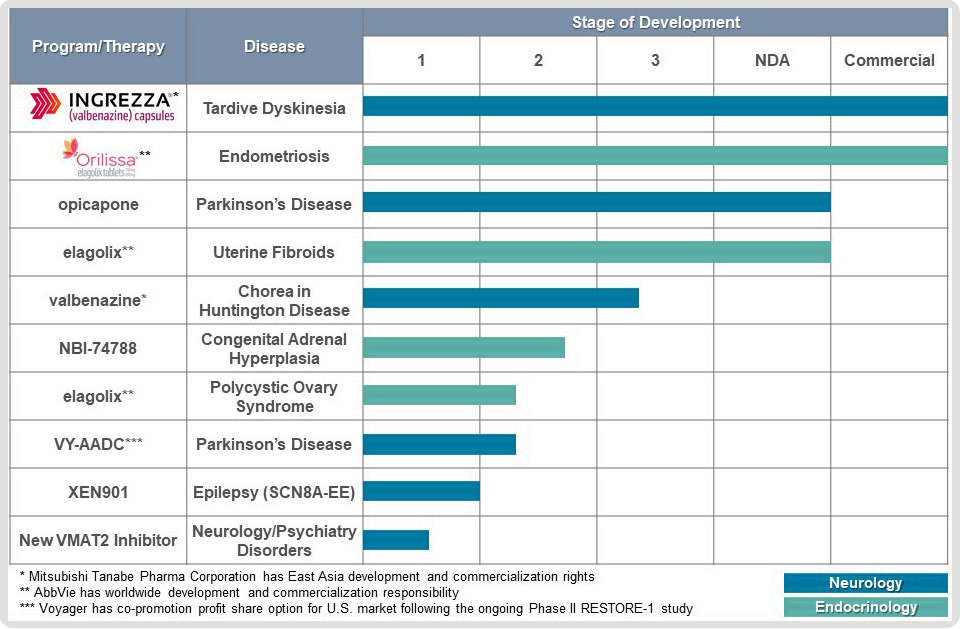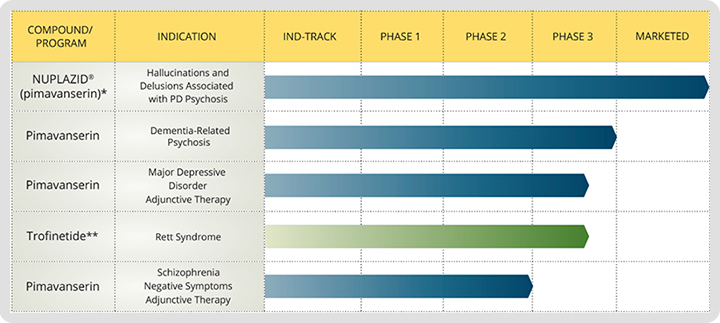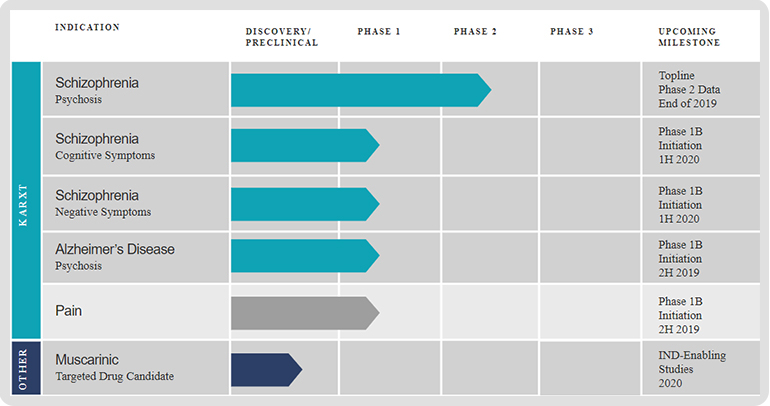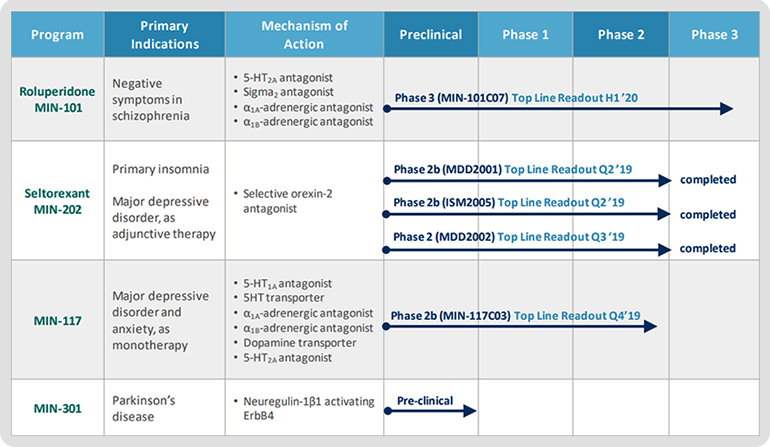- Biotechs have been rejuvenated by a dose of M&A and near-term regulatory deflection
- After significantly lagging the broader market, biotech is steadily making progress
- Regulatory concerns remain an overarching backdrop to the healthcare sector
- Neurology is attracting renewed interest after Biogen’s decision to present its Alzheimer’s drug for FDA approval
- We briefly discuss 4 promising neurology stocks
Biotech Pulse

Biotechs finally have a gust of wind in their sails.
In a space of 2-months, biotechs have gone from recording yearly lows in early October, to recording 2019 highs. The 25% surge has been a result of a relatively less threatening regulatory environment and a strengthening of acquisition and partnership activity.
The earlier articles, Healthcare On The March and 4 RNA Stocks For A Biotech Portfolio, emphasized why healthcare should begin to receive greater weight in portfolios as the risk of an industry restructuring has eased somewhat and a recent healthcare transparency plan by the administration was much milder than what it could have been. Also, as pharmaceutical companies continue acquiring biotechs or entering into large dollar partnerships with them, it has reassured investors and boosted confidence in biotech prospects. There is no doubt that scientific advances have been accumulating. But biotech valuations were held back and required a glimmer of regulatory relief and a shove from timely acquisitions.
Biotech has been a lagging sector and the recent spurt is making up for lost ground. As has been noted in prior articles over the past two months, we do believe there is a window of opportunity that exists for healthcare overall and biotechs, in particular, to perform relatively better than the broader market.
Neurology – A Complex Challenge
Over 350 years ago, Oxford-educated English physician Thomas Willis in his book Cerebri Anatome (The Anatomy of the Brain) meticulously laid out the various structures of the brain, and first introduced the word neurology or doctrine of the nerves, as he characterized it. Neurology is now the medical field of nervous system disorders. Such was the clinical acumen, prescience, and depth of masterful brain theories establishing astonishing links, that Willis is considered as the founding father of neurology and his name has been imprinted on the human mind. A circular formation of arteries at the base of our brain, as highlighted in the image below, is known as the Circle of Willis.

Although the discipline of neurology was established 350 years ago and developed by many great minds, rapid progress has occurred in the last few decades as advances in technology provided the medium to further unravel the mysteries of the mind and the nervous system. But a lot remains unknown in this highly complex, interlinked, and broad field of neuroscience, which is the scientific study of the nervous system that includes the central nervous system or CNS, the brain, and the spinal cord.
Neurology is a difficult field due to the complexity of the organs, the signaling networks, and the pathways. The diseases and disorders related to the mind and nervous system are many and diverse, including prominent ones like Alzheimers, schizophrenia, dementia, psychosis, epilepsy, insomnia, depression, Parkinson, multiple sclerosis, etc. And so is the list of players which include giant pharmaceutical companies and biotechs, like Biogen (BIIB), Neurocrine Biosciences, Acadia Pharmaceuticals, Alkermes (ALKS), Sage Therapeutics (SAGE), Voyager Therapeutics (VYGR), Axsome Therapeutics (AXSM), Minerva Neurosciences, and Karuna Therapeutics, to name just a handful. Due to the uniquely complex nature, there is a high rate of company attrition in this field.
Biogen recently put some vigor in the neurological segment of the biotech sector when in October it resurrected its drug, Aducanumab, which targets the amyloid in Alzheimer’s disease. There is some meaningful progress being made in brain and CNS disorders, although the road to travel is still very long.
Below we mention four companies in the neuro space which investors interested in this segment can keep an eye on. All these have multiple shots at the goal due to the pipeline-in-a-product approach. Of course, there are many other attractive neuro companies as well besides these four.
Neurocrine Biosciences (NBIX)
Neurocrine is one of the largest biotech companies focused on neurology, endocrine, and psychiatric disorders. It has an active commercial program in movement disorders with a product in tardive dyskinesia and another product in women’s health collaboration with AbbVie.
In Parkinson’s disease, the company has tested a drug as an adjunct therapy which is now under NDA review with a PDUFA action date in April 2020. Another exciting therapy program for Parkinson’s is the VY-AADC, with the VY standing for the collaboration with Voyager Therapeutics. The drug plants an AADC gene directly into the neurons where the dopamine receptors are located, enabling these neurons to then produce the AADC enzyme for converting Levodopa into dopamine. As many would know, Levodopa, often in combination with carbidopa, is the standard of care in addressing movement disorders by managing dopamine levels. Managing symptoms is the best one can do as Parkinson’s itself has no cure yet. The VY-AADC gene intervention can potentially prolong the benefit of Levodopa, improve motor function, and reduce the daily “OFF” time when the effect of Levodopa wears off and motor functions deteriorate. The VY-AADC drug is being evaluated in Phase 2 trials. The two companies have collaborated on another program, VY-FXN01, for Friedreich’s ataxia.

Neurocrine had a cash and equivalents balance of ~$875 million at the end of the third quarter, and a market cap of over $10 billion. The company has deep knowledge of the central nervous system and its interactions with the endocrine system and remains a key player in unraveling the neurological mysteries, particularly of motion-related disorders.
Acadia Pharmaceuticals (ACAD)
Acadia is a leading company focused on CNS related disorders. In 2016, the company achieved a significant milestone when its drug Nuplazid was approved for certain psychotic symptoms associated with Parkinson’s disease. That remains the only FDA approved drug for that condition.
Earlier in December, the Company reported positive topline Phase 3 results for its small molecule drug, Pimavanserin, which met the primary and secondary endpoints for psychosis symptoms related to a variety of dementia subtypes, including from Alzheimer’s. This is again an area with no approved treatment, and a company meeting with the FDA should occur during the first half of 2020.

In an example of a pipeline-in-a-product, Pimanvanser is also in Phase 3 testing as adjunctive therapy for major depressive disorder or MDD. Furthermore, Pimanvanser is also being tested in Phase 2 for the management of negative symptoms from schizophrenia. Last month it announced positive top-line results with the study demonstrating a statistically significant improvement on the study’s primary endpoint. A second pivotal study is expected to begin by mid-2020.
Acadia continues to work on remedies that are the first-in-class, where none exist presently. Acadia had cash and equivalents balance of ~$680 million at the end of the third quarter, and a market cap of nearly $7 billion.
Karuna Therapeutics (KRTX)
Karuna is an emerging company focused on neuropsychiatric disorders characterized by diseases like Alzheimer’s and Schizophrenia. It has a pipeline-in-a-product with its lead candidate, KarXT, which is an oral modulator of muscarinic receptors found in the CNS and peripheral tissues. KarXT selectively activates the muscarinic receptors in the brain. It follows a unique mechanism of action relying on muscarine receptors rather than inhibiting dopamine receptors as most therapies presently target.
Last month, Karuna announced strong results from its Phase 2 trial in patients with acute psychosis in schizophrenia demonstrating a clinically significant 11.6 point improvement on the PANSS score over a placebo, compared to an ~10 point improvement from existing drugs. With a good safety profile in hand, the company anticipates meeting the FDA shortly and beginning Phase 3 in the first half of 2020.

KarXT is also being used in a Phase 1b study for Psychosis in Alzheimer’s disease with topline data in the second half of 2020. Two additional Phase 1b trials for cognitive symptoms and negative symptoms in Schizophrenia are expected to begin in the first half of 2020.
The company has a promising approach using a different path of mechanism than many of the existing anti-psychotic medications, and it will be a much-watched company in 2020. After a recent offering in November, the company has ~$400 million in cash and equivalents and has a current market cap of $1.6 billion
Minerva Neurosciences (NERV)
Minerva is one of the smaller biotech companies focused on CNS disorders and has several first-in-class compounds targeting schizophrenia, depression, insomnia and Parkinson’s.
The lead product candidate, Roluperidone (MIN-101), is targeted at the treatment of negative symptoms in schizophrenia. Roluperidone blocks the serotonin and sigma receptors that contribute to the regulation of cognition, mood, anxiety, and sleep. The drug is presently undergoing Phase 3 study, with enrollment expected to be completed by the end of 2019, and topline data from the first 12-week study available in the first half of 2020. A second 40-week study follows the completion of the first study. The drug originated from Mitsubishi Tanabe Pharma.

Another drug candidate, Seltorexant (MIN-202), is targeted as an adjunct therapy for insomnia related to the depressive disorder and is being jointly developed with Janssen Pharmaceutica, a Johnson & Johnson company. Phase 2b results in June 2019 met the primary endpoints. Phase 3 studies are in planning. The drug is also being tested for insomnia disorders. A topline readout from the Phase 2b trial is imminent for MIN-117, an antidepressant candidate.
In this tricky field of neurology, Minerva has a promising portfolio of co-owned and/or co-developed drugs, targeting major market opportunities with near-term readouts. The market focus is quite similar to that of Acadia Pharmaceuticals. At the end of September quarter, Minerva had a cash and equivalent balance of $60 million, and its current market cap is ~$300 million.
Biotechs On The March
As we have continued to maintain in our recent articles, there is a window of opportunity for healthcare in general and biopharma in particular, to make meaningful progress on valuations, before election season jostling brings back the focus again on healthcare costs, perhaps as early as late 1st quarter. The rally in healthcare, and particularly biotech stocks, can persist for the remainder of the year, justifying a continued higher portfolio weighting.
There are many promising healthcare companies. Some of these are already part or may have been part of our Prudent Biotech or the Graycell Small Cap or the Prudent Healthcare model portfolios. A few of these promising companies from a portfolio standpoint include Alnylam Pharmaceuticals (ALNY), Amgen (AMGN), Regeneron Pharmaceuticals (REGN), Acadia Pharmaceuticals (ACAD), Arrowhead Pharmaceuticals (ARWR), Seattle Genetics (SGEN), Incyte (INCY), Dicerna Pharmaceuticals (DRNA), Deciphera Pharmaceuticals (DCPH), Kodiak Sciences (KOD), Allakos (ALLK), Reata Pharma (RETA), Moderna (MRNA), Aimmune Therapeutics (AIMT), Amarin (AMRN), Assembly Biosciences (ASMB), Zymeworks (ZYME), Karyopharm Therapeutics (KPTI), Sarepta Therapeutics (SRPT), Momenta Pharmaceuticals (MNTA), Apellis Pharmaceuticals (APLS), Flexion Therapeutics (FLXN), Axsome Therapeutics (AXSM), OptiNose (OPTN), Crispr Therapeutics (CRSP), Uniqure (QURE), Mirati Therapeutics (MRTX), Vertex Pharmaceuticals (VRTX), Arvinas (ARVN), Tricida (TCDA), and Iovance Biotherapeutics (IOVA).
If you are interested in quantitative model-driven investing in the healthcare sector, you must look at the Prudent Healthcare model portfolio service on Seeking Alpha, to be offered imminently. The Prudent Healthcare model portfolio comprises up to 10 stock positions in the healthcare sector and is different from Prudent Biotech and Graycell Small Cap newsletter service. You can click on the Follow button for updates and learn more about the various service offerings.
(The article was first published on Seeking Alpha)
